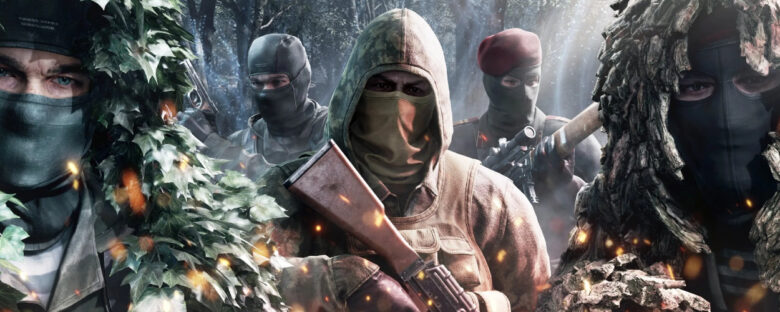Konami’s latest punt at reviving Metal Gear Online marks one of the publisher’s best multiplayer offerings to date, but its timing couldn’t be worse. Released as a free update for Metal Gear Solid Delta: Snake Eater on October 30th, some two months after the base game’s launch, Fox Hunt has found itself wedged between military shooter sequels Battlefield 6 and Call of Duty: Black Ops 7. As if that wasn’t enough to contend with, it’s also going up against the unstoppable ARC Raiders which has taken the online gaming space by storm.
Fox Hunt may be the underdog, but when it comes to MGS multiplayer, Konami couldn’t have set the bar any lower with 2018’s simply awful Metal Gear Survive. Not only does it easily surpass the company’s previous attempt to do something new with the Metal Gear franchise, Fox Hunt is a surprising stroke of genius that takes elements of the Snake Eater remake to craft a fun and fast spin on the now matured battle royale formula.
Konami has done very little to attract attention to this new mode and even during Fox Hunt’s initial onboarding, the developers don’t do a great job at succinctly explaining what the deal is. So, here’s a quick breakdown.
Each match features 12 players – 6 pairs – who will drop into one of two scenarios. In Survival Capture teams will scour the map for frog-like “Kerotan” figures, making sure both players are each holding onto one when the round timer expires. The winning team will advance to the next round, where the number of figures is reduced, until one pair of players wins.
Survival Intrude uses the same round-based formula, populating the map with duck-like “GA-KO” figures instead. Shooting one of these will create a zone that you and your partner will need to defend until the clock counts down. The further you advance, the fewer capture points become available, inevitably leading to a final showdown.
Despite their preoccupation with cutesy collectable figures, both modes work surprisingly well when paired with the spruced up stealth action gameplay of MGS Delta. Snake Eater’s OSP (on-site procurement) doctrine is a natural fit for the battle royale or extraction shooter formats, dropping players into each match completely naked, forcing them to scramble for weapons and equipment. If you happen to spawn next to an enemy team, that first minute or so will be a desperate struggle to see who can bust open a supply crate first, using whatever gear inside to repel the attackers.
While it’s possible to scour the map for more crates until you’ve refined the perfect loadout (complete with body armour, upgrade kits, and health/stamina consumables) you’ll also need to keep an eye on the countdown clock. Clever operatives will lock down an objective in good time, fortifying themselves using natural terrain and Fox Hunt’s smart new gadget: AT-Camo.
Think of this as a goofier version of Old Snake’s OctoCamo suit from Metal Gear Solid 4. Wherever you are, you can pop open a radial menu and select from a variety of equipped patterns such as rubble, grass, or bark. Doing so will daub your character in a bulky disguise with the intention of blending in with your surroundings. If you happen to have the right the camouflage you will be almost impossible to see from a distance, though all players can temporarily activate a kind of six sense that will give a rough indicator of which direction other operatives are located.
Fox Hunt’s gunplay is lifted directly from the Snake Eater remake, allowing you to seamlessly switch between third and first person perspective (while aiming). It’s sharp and responsive though not everyone will be a fan of how it pairs with Metal Gear’s character movement which can feel janky and a bit cumbersome. With that said, after a few rounds, it should start to feel natural and you’ll quickly learn how to make the most of your surrounding terrain and the ample cover it provides.
Compared to other shooters, the “time to kill” or “TTK” here is fairly generous, especially if you happen to scavenge some body armour. This helps add some longevity to firefights, and puts more emphasis on positioning and strategic use of equipment rather than favouring whichever players wield the most firepower. With that said, well-placed headshots can still strike down unsuspecting operatives with a “drop shot” damage bonus given when shooting someone as they open a crate or use items such as meds or rations.
On the subject of longevity, Fox Hunt features a progression system that feels both genuinely rewarding and problematic at the same time. As you play, you’ll earn in-game currency that can then be spent on loot boxes (remember those?) stuffed with various unlocks. While some of these are purely cosmetic – such as radio callouts, emotes, and playercards – others will reward you with valuable in-game buffs when you duplicate them. For example, AT-Camo suits can come equipped with perks such as silent movement or even a bonus luck rate when opening supply crates. Meanwhile, stacking duplicate character skins will increase their life regeneration and stamina recovery.
In a nutshell, players have a chance at unlocking some pretty effective augmentations that can help give them the upper hand. While it sounds bad, this is pretty much the case for most online shooters with the likes of Call of Duty and Battlefield reserving the best weapons, perks, and gear for higher level players. You might even argue that Fox Hunt’s random box system is fairer, giving anyone the chance to unlock loadout options they would typically need to grind for. And before anyone asks if it’s pay-to-win, there is no in-game cash shop or microtransactions. We hope it stays that way, Konami.
Although it’s on a much smaller scale than most live service titles, Fox Hunt’s ongoing success will also depend on meaningful post-launch support. With only two modes and a handful of maps, it would be a shame for Konami to let this little gem fade away without presenting its players with some kind of roadmap.









